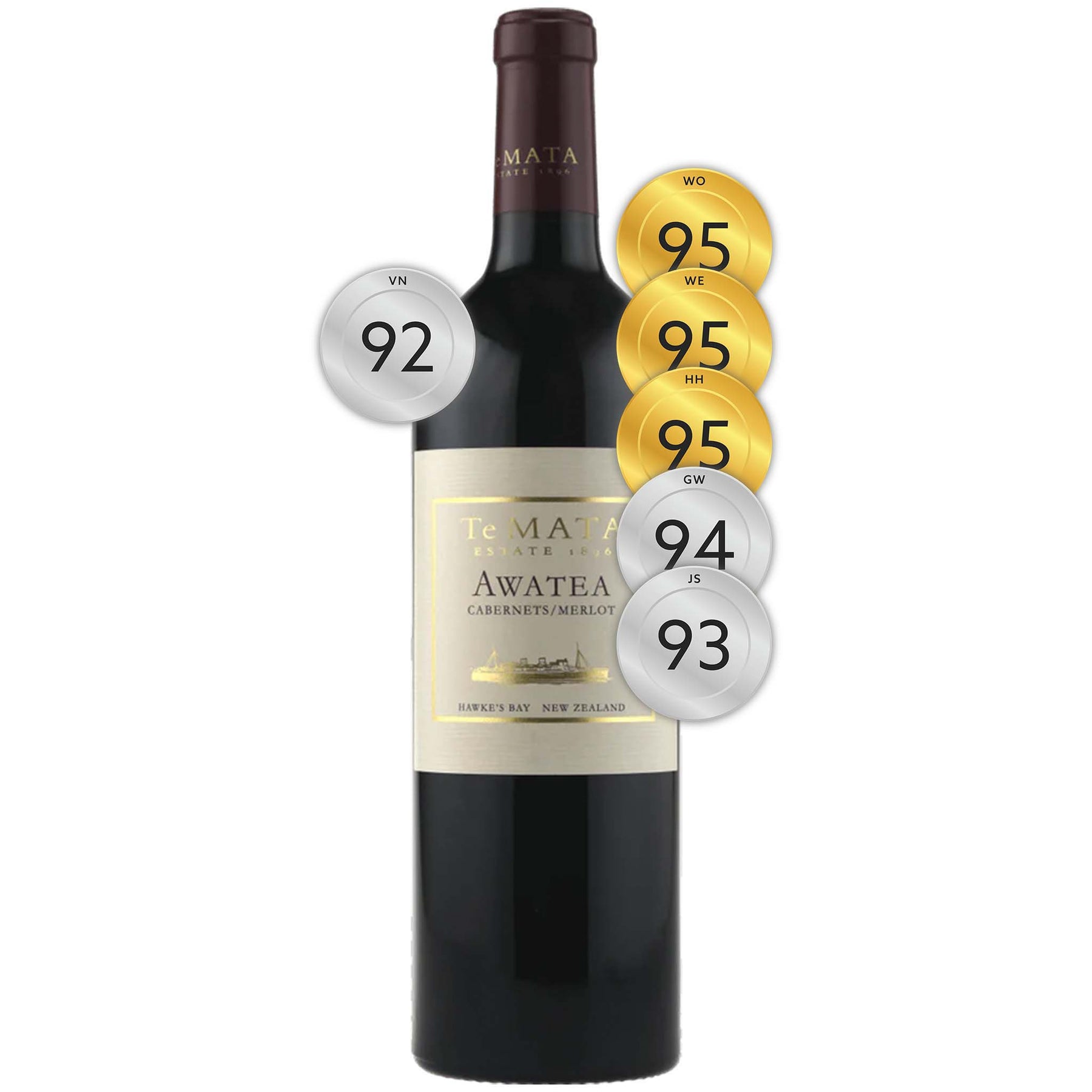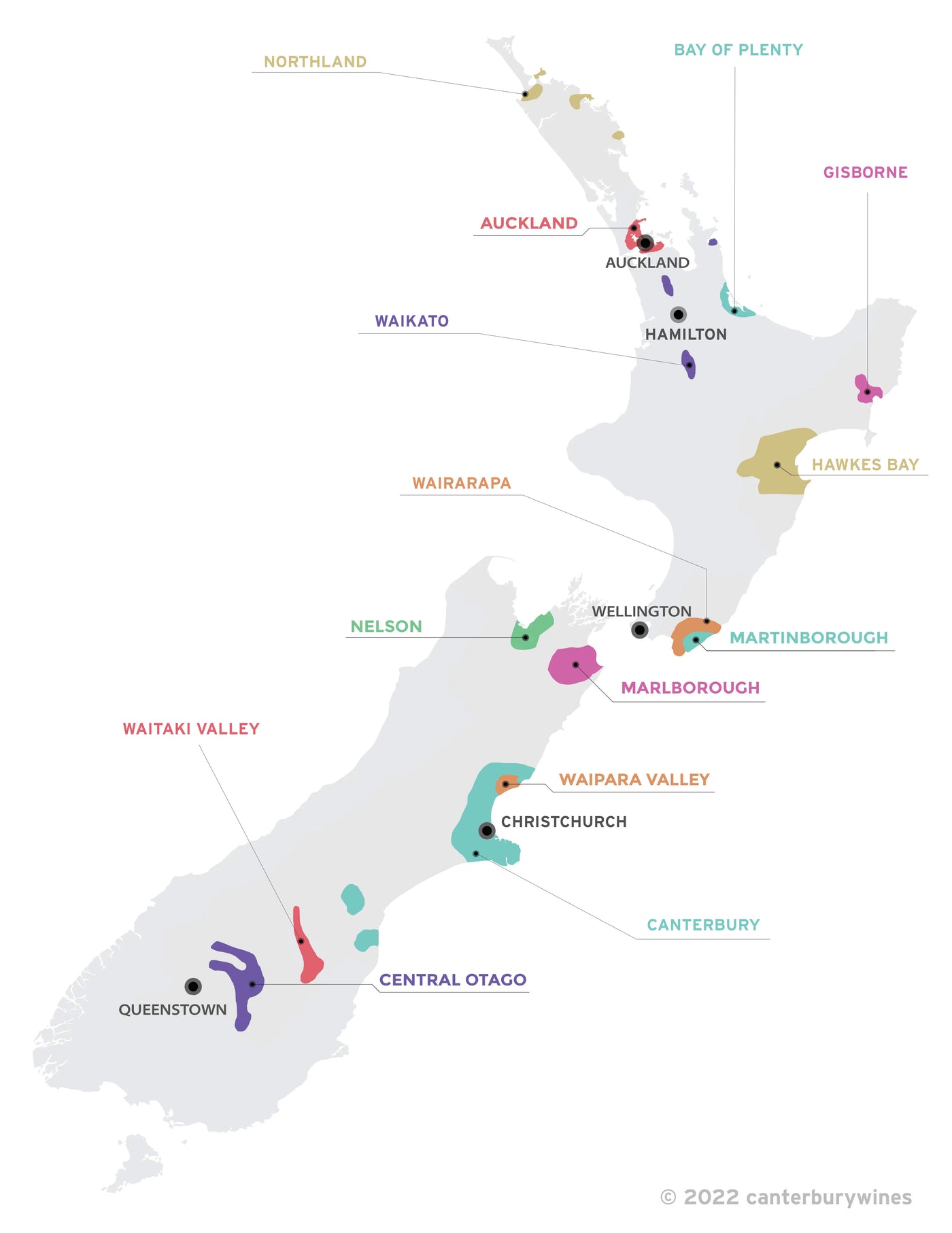

Te Mata Estate Awatea Cabernet Merlot 2018
Style: Red Wine
Closure: Cork
Te Mata Estate Awatea Cabernet Merlot 2018
Warehouse
34 Redland Drive
Vermont VIC 3133
Australia
Critic Score: 95
Alcohol: 13.5%
Size: 750 ml
Drink by: 2040
Te Mata Estate was established in 1896, specialising in high-quality wines of classical style. The winery remains family owned, producing internationally recognized wines exclusively from its Hawke's Bay vineyards. Te Mata produce two classic blends of cabernet sauvignon, merlot and cabernet franc; Coleraine which is regarded by many as New Zealand's finest red wine and its younger brother Awatea.
"It's medium-bodied, but dense and full of flavour, fine-boned, fresh and crisp, a purple juiciness through it, and a cool feel, along with fine tightly packed emery tannin. The length is both precise and long. Beautiful svelte Cabernet of grace and class." Gary Walsh
The 2018 Awatea is a blend of 48% cabernet sauvignon, 37% merlot and 15% cabernet franc.
"Dark and bright, Awatea Cabernets-Merlot 2018 is an inky purple with an electric crimson edge. From a warm and dry vintage, Awatea 2018 shows ripe blackberry and blackcurrant aromatics with elements of vanilla creme and sandalwood. On the palate there's a banquet of plum, raspberry, dried herbs and lingering dark cherry, set out across cedar and cocoa powder tannins. Classical in structure, with fine balance and length, Awatea Cabernets-Merlot 2018 is resplendent in its purity and detail." Te Mata Estate
Te Mata Estate Winery
Expert reviews
"The perfumed bouquet shows dark and purple fruit characters with warm spice, olive, cedar and floral notes. It's splendidly concentrated and beautifully layered on the palate, delivering excellent fruit power combined with depth and complexity, finishing persistent and engaging. At its best: 2022 to 2030. Tasted: Feb 2020." Sam Kim, Wine Orbit – 95 points
"This is an excellent bottling of Awatea, the younger brother of Te Mata's top red, Coleraine. From a long, warm growing season, this feels like a complete wine. Winter warming notes of plump plums, dark cherries and chocolate are complemented by a bounty of dried herbs, spices and graphite. The palate is similarly dense and structured but with elegance and balance. Tannins are powdery and fine, winding through dark, tangy fruit and herbs. Like many of Te Mata's wines, it has an old school Bordeaux vibe that will appeal more to some than to others." Christina Pickard, Wine Enthusiast - 95 points
"Very deep, bold, bright purple/red colour leads into a superbly fragrant cabernet nose of violets, cassis, cedar and tobacco, while the palate is intense and bright, focused and elegant, with abundant fine tannins but also ready drinkabilty and superb balance. An excellent Awatea, with the structure to age and develop for many years. Drink: 2022-2038." Huon Hooke, The Real Review - 95 points
"Cabernet Sauvignon, Merlot and Cabernet Franc in the capable hands of one of NZ's best wineries. Perfumed with violet, raspberry, blackcurrant, lead pencil, a smattering of dried herb and paprika. It's medium-bodied, but dense and full of flavour, fine-boned, fresh and crisp, a purple juiciness through it, and a cool feel, along with fine tightly packed emery tannin. The length is both precise and long. Beautiful svelte Cabernet of grace and class. Alcohol: 13.5%; Price: $48; Closure: Cork; Drink: 2020-2030." Gary Walsh, The Wine Front - 94 points
"There's a very attractive, cedary edge to this with red cherries, redcurrants and blueberries, as well as darker plum and cocoa notes. The palate is so composed and fresh and has a vivid, detailed and neatly layered feel." James Suckling, JamesSuckling.com - 93 points
"From the home of New Zealand's most famous Bordeaux-style blend, Coleraine, its sibling Awatea is always consistent in offering classic Bordeaux aromas and flavors with the rich vibrancy of the Southern Hemisphere – and with a reasonable price tag. This offers classy, primary fruit with cassis, dried raspberries and plum richness allied with a cool Cabernet Sauvignon expression that's herbal, verging on spearmint, while the Franc proportion offers pencil-lead-like characters. Integrated oak-derived flavors of cedar from 16 months in French oak, as well as tobacco, ensure this is a more serious expression. Fine, grainy tannins linger on the lengthy finish. The final blend is 48% Cabernet Sauvignon, 37% Merlot, and 15% Cabernet Franc." Vinous - 92 points
About the winery

Te Mata Estate was established in 1896, specialising in high-quality wines of classical style. The winery remains family owned, producing internationally recognized wines exclusively from its Hawke's Bay vineyards.
"New Zealand's first growth" - Andy Howard MW, Decanter Magazine
"A national treasure" - Jancis Robinson MW
"New Zealand's greatest winery" - Robert Parker's Wine Advocate
Te Mata Estate was originally part of Te Mata Station, a large pastoral land-holding established by English immigrant, John Chambers, in 1854. After returning from France, John Chamber's third son, Bernard, had the idea to plant vineyards on the north-facing hills around Havelock North. In 1892 he planted vines on three parcels of hillside land above the homestead and began converting the original stables to ferment and mature the wines. The first vintage wines were released in 1986. Today, Te Mata Estate still uses those same three vineyards.
The Chambers family sold the property in 1919. The property had two other owners until John and Wendy Buck acquired Te Mata Estate in 1978 and instigated a twenty-year development program, which commenced with the restoration of the original winery building and the replanting of all of the original vineyards. In addition, new vineyard sites were acquired in the Bridge Pa, Gimblett Gravels and Dartmoor Valley sub-regions of Hawke's Bay (refer map below). The Buck family have been producing Te Mata wines ever since. The success of Te Mata's wines in the '80s is credited with sparking the revival of Hawke's Bay as a top wine region.

Te Mata Estate Winery and Hawke's Bay sub-regions

New Zealand
New Zealand is home to more than 700 wineries across 14 wine regions. The regions are Auckland, Bay of Plenty, Canterbury, Central Otago, Gisborne, Hawkes Bay, Marlborough, Martinborough*, Nelson, Northland, Waikato, Waipara Valley, Wairarapa and Waitaki Valley. * Martinborough is a sub-region of Wairarapa, however, as it is world renowned it is considered here to be a region to avoid confusion.
The wine regions in New Zealand stretch from latitudes 36°S (Northland) in the north (comparable in latitude to Jerez, Spain), to 45°S (Central Otago) in the south (comparable in latitude to Bordeaux, France). New Zealand's climate is maritime, producing cooler summers and milder winters than would be expected at similar latitudes in Europe.
Viticulture in New Zealand dates back to 1836 when British resident James Busby produced wine in the far north, but it wasn't until 1985 that the wine industry came of age when Cloudy Bay Sauvignon Blanc garnered international attention and critical acclaim.
New Zealand is internationally renowned for Sauvignon Blanc (particularly from Marlborough), Pinot Noir (Central Otago, Martinborough and Waipara Valley), Chardonnay, Bordeaux-style blends of mainly Merlot and Cabernet Sauvignon (Hawkes Bay) and Syrah (Hawkes Bay). Sauvignon Blanc accounts for 63% of the area of the national vineyard, followed by Pinot Noir (14%), Chardonnay (8%), Pinot Gris (7%) and Merlot (3%).


